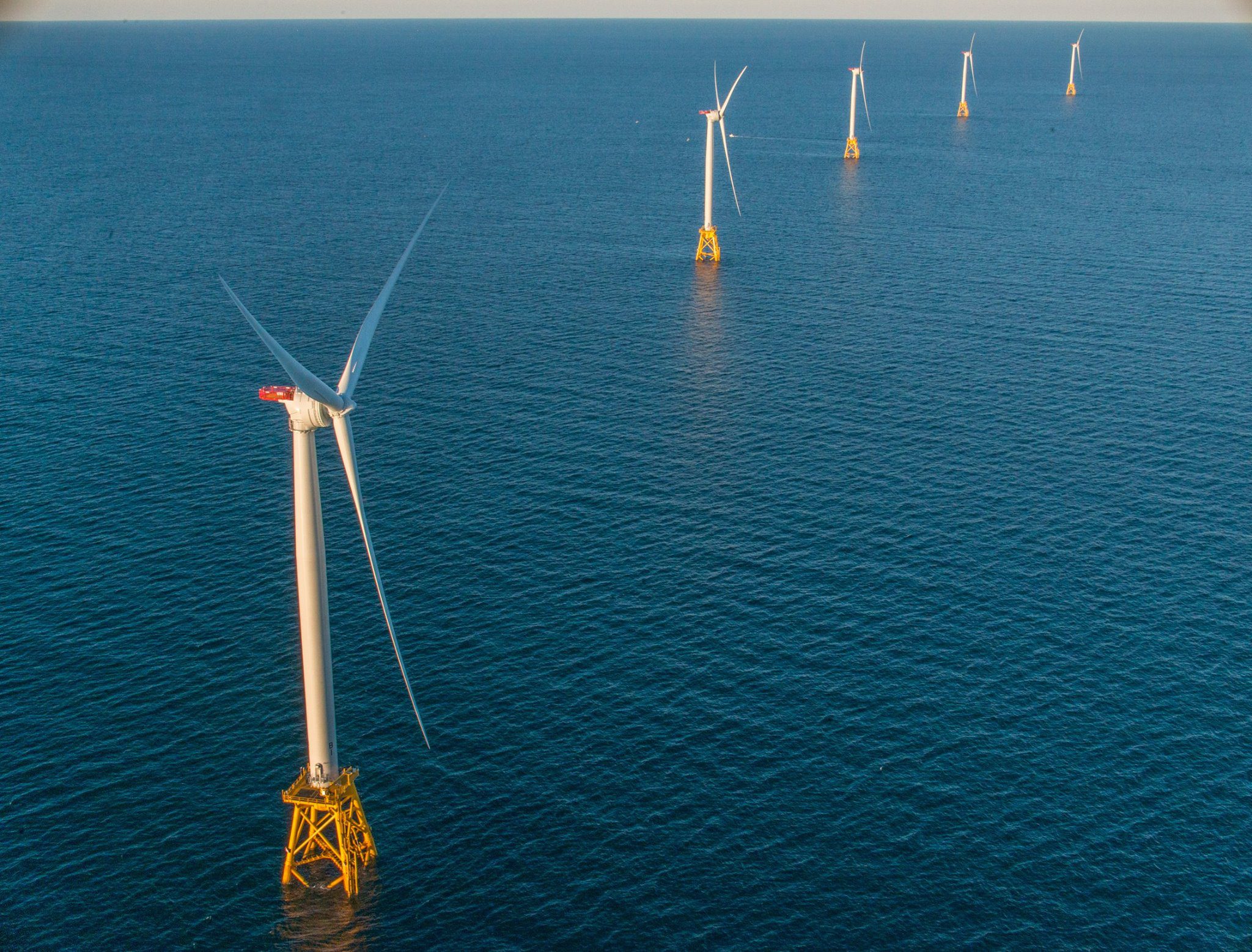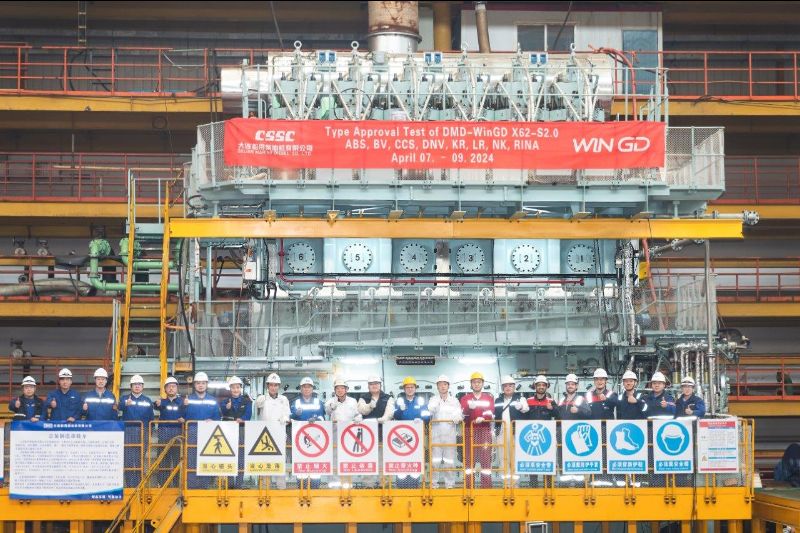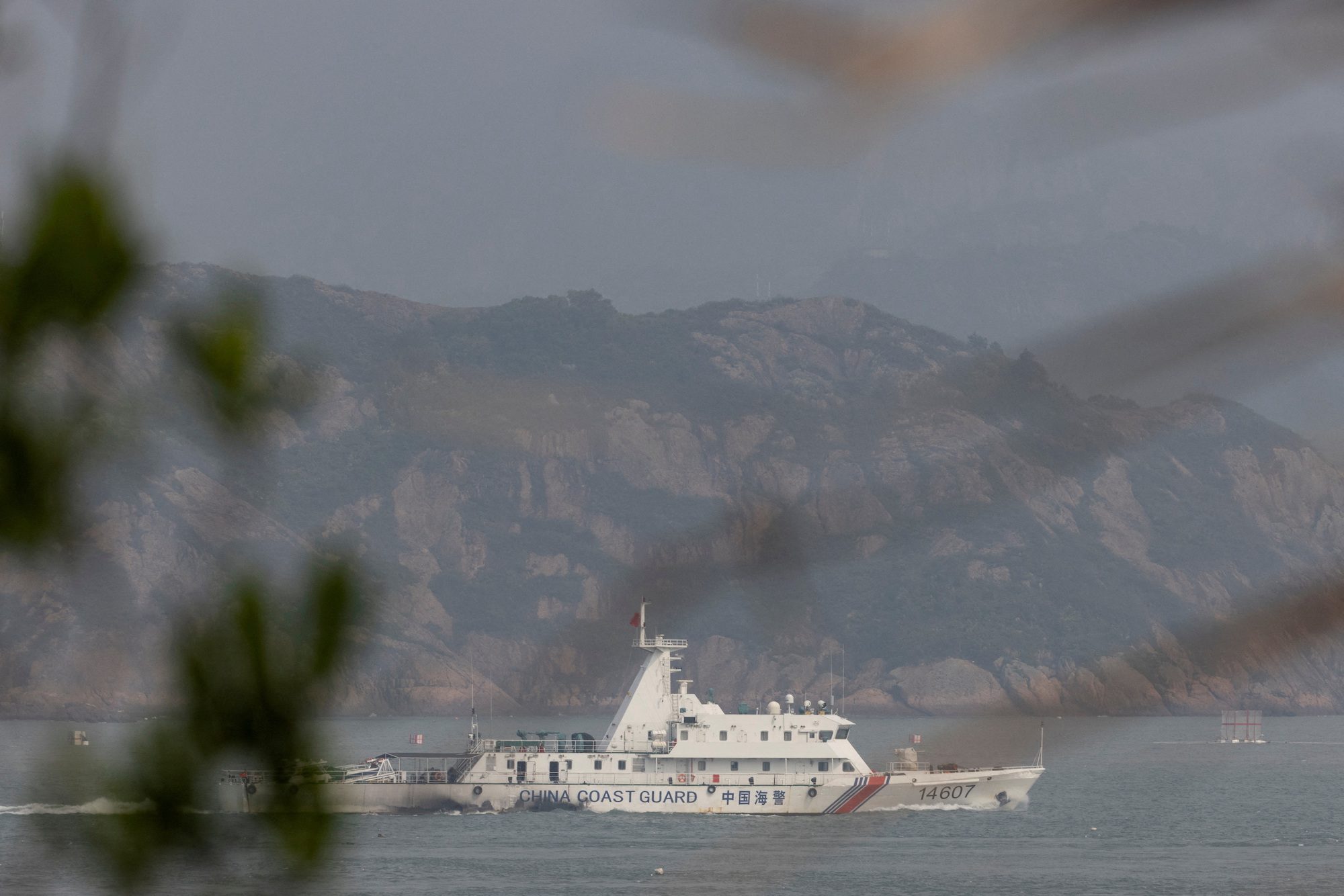
Northeast Draws Millions in Perks in Push for Offshore Wind
Opened in 2016, Deepwater Wind LLC’s 30MW Block Island Wind Farm is the first and currently only offshore wind farm in the United States. Photo: Deepwater Wind LLC
By Christopher Martin (Bloomberg) — Want to spruce up your downtown, or maybe get $10 million to support workforce training at the local college? How about investments to help rebuild aging ports and establish trust funds for your fisherman?
A U.S. unit of Denmark’s Orsted A/S is now dangling all of those perks in its push to be an early developer of offshore wind in a potential $70 billion East Coast market. The target of the largesse: Community groups with political muscle, the ability to shape public sentiment and access to lawyers.
The flood of incentives follows the 2017 death of the $2.6 billion Cape Wind project in Massachusetts after a decade-long battle fueled by complaints of spoiled shoreline views and disrupted fisheries. While some fisherman remain skeptical, the promised payouts are clearly lining up local advocates.
“We’re over the moon,” said Michael Passero, the mayor of New London, Connecticut. “We’ve been down on our luck for decades. This is capturing a whole new energy industry to the region. Offshore wind will become as important as whaling was back in the day.”
The package drawing Passero’s raves: $93 million to upgrade the State Pier in New London so it can handle the heavy-lift requirements of offshore turbines, as well as a $3 million upgrade to the area’s fishing vessel harbor. In New York, Orsted is offering to help revitalize the Long Island village of Port Jefferson, and promising a $10 million investment in Suffolk County Community College to train future technicians
The first large project for U.S. waters will include 84 turbines to produce 800 megawatts 14 miles off of Martha’s Vineyard. While Orsted, Vineyard Wind and other developers have outlined their plans for leases they’ve purchased in U.S. auctions, none will be built without contracts to sell the power they produce.
New York plans to announce within weeks its first contracts for 800 megawatts of wind power, enough to power about 160,000 homes. By 2030, the state is expected to have 7,730 megawatts under contract from wind power. In New Jersey, the goal is 3,500 megawatts, in Massachusetts it’s 3,200, Connecticut is 2,000 and Rhode Island is 1,000 megawatts. That would represent a $70 billion investment over a decade.
For more, listen to this mini-podcast on the offshore wind boom.
The distance from the shore for the Vineyard Wind project is, in some ways, yet another community perk. The turbines will be difficult to see from Martha’s Vineyard and invisible from Montauk Point on Long Island, the developer has said, taking away at least one complaint that helped kill Cape Wind, the Massachusetts project designed to sit just five miles offshore.
Naysayers Remain
Still, naysayers remain, primarily among groups concerned that the giant turbines planned will disrupt fisheries. In Rhode Island, the debate spurred a split within the fishing community, roughly turning on the project’s possible effects on lobsters versus squids.
In February, the Rhode Island Fishermen’s Advisory Board approved a plan for a $1 million initial payout to fishermen during the first year of construction, and another $3.2 million over the next 29 years. The developers also promised to create a 5-year, $12.5 million trust fund to cover any additional costs, with an independent board to determine outlays.
A rival group, however, complained the plan didn’t consider the possible effect on squid, a moneymaker for local fisherman who supply the fish to be made into calamari.
“They’re basically all lobstermen, and were paid well to conduct a fishery science project,” said Richard Fuka, head of the Rhode Island Fisherman’s Alliance. “They’ll chase the squid away.”
No agreement could have meant “we would’ve lost everything,” said Grover Fugate, head of the state’s Coastal Resources Management Council, which approved the plan. “None of the fishermen were completely happy with the agreement,” Fugate said by phone. But there’s no indication any single type of fish would be more affected, he said.
One small pilot project, meanwhile, has already been constructed, a 30-megawatt, five-turbine operation that began operations in December 2016 off the coast of Rhode Island. Now, the climate-focused governors of New York and New Jersey have taken the first steps to expand the offshore market.
New York’s Andrew Cuomo in January tripled his state’s plan for wind systems to 9 gigawatts, which would be about a third of the state’s energy draw. He’s also offered $200 million in port upgrades to install them. New Jersey’s Phil Murphy jumped in with an accelerated schedule to get 3,500 megawatts, and opened a supply chain registry to aid developers and lure manufacturers.
“We need to lift our heads up and feel the winds, and realize that is where our future is leading us,” Murphy said at a recent industry conference in New York. “New Jersey stands ready to follow those winds together with you.”
Developers are delighted for the embrace. Denmark’s Orsted, planning its U.S. debut for a decade, was outbid during some of the early auctions for offshore leases. So they paid $510 million to buy a Rhode Island-based competitor Deepwater Wind LLC, the builder of the only offshore wind farm in U.S. waters.
In addition to helping out fishermen, ports and schools, developers like Vineyard Wind, a partnership of Avangrid Inc. and Copenhagen Infrastructure Partners, agreed to halt some construction during the migration of the endangered right whale, add buoy monitors and curtail work during nearby whale sightings.
On Friday, the developer plans to announce funding for training programs for six schools during a press conference at a port in New Bedford, Massachusetts.
Thomas Brostrom, the CEO of Orsted Wind Offshore, moved to the U.S. from London four years ago. He praised the recent efforts by New Jersey and other states to commit to development. “The U.S. got the timing exactly right,” he said by telephone.
The whaling industry lasted about four decades and made Passero’s New London one of the richest communities by the late 19th century. He’s now hoping the offshore wind industry can bring a new kind of energy wealth back to the area.
“Those beautiful old mansions are in need of some repair,” Passero said. “Hopefully offshore wind will last at least as long as the whales.”
© 2019 Bloomberg L.P

Subscribe for Daily Maritime Insights
Sign up for gCaptain’s newsletter and never miss an update
— trusted by our 109,113 members

Get The Industry’s Go-To News
Subscribe to gCaptain Daily and stay informed with the latest global maritime and offshore news

 Join The Club
Join The Club








